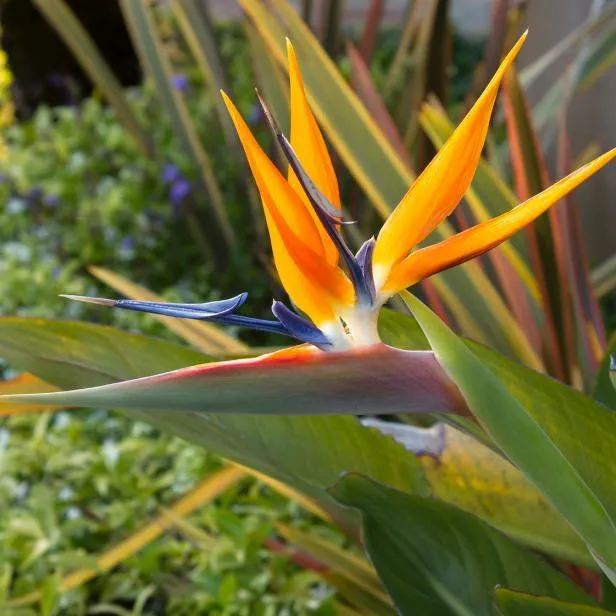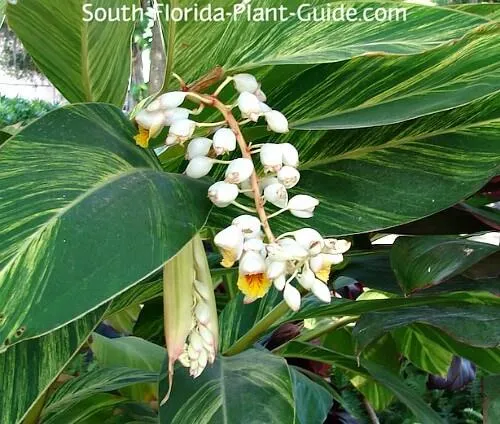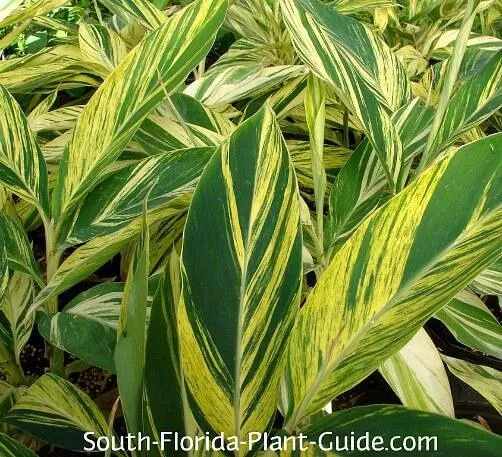Everything You Need to Know About the Bird of Paradise Variegated
The bird of paradise (Strelitzia reginae) is one of the most stunning flowering plants with its unique bird-like blooms. Within this exotic species exists a variegated cultivar that adds extra visual interest with its colorful leaves. If you’re curious about growing the bird of paradise variegated in your home or garden, read on for a comprehensive guide covering all the basics.
Description
- Like its non-variegated cousin, the bird of paradise variegated produces tall stalks topped with vivid orange, blue and white pom-pom like blooms.
- However, its main distinguishing feature are the leaves which sport attractive cream or yellow marbling/striping against a green background.
- Leaves can range from heavily variegated to just lightly splashed with the secondary color, depending on the individual plant.
From my experience caring for these plants, the variegated type tends to grow a bit slower than the all-green version. But the tradeoff is those gorgeous foliage patterns that really make it a showstopper!
Growing Conditions
Bird of paradise variegated prefers warm, humid conditions to thrive. It likes:
- Bright, indirect light – Too much direct sun can scorch the leaves.
- Temperatures above 60°F – It’s happiest between 75-85°F.
- Well-draining, organic potting mix – Water when lightly dry.
- Moderate fertilizing during spring/summer growth.
- High humidity levels – Use a pebble tray or mist frequently.
In zones 10-11 it can be grown outdoors year-round as a tropical plant. Colder climates require overwintering indoors as a houseplant. The variegated form seems more prone to leaf drop if conditions aren’t just right, kind of like a diva!
Propagating Bird of Paradise Variegated
There are a few methods for increasing your variegated bird of paradise stock:

- Division – Carefully untangle and separate offshoots from the mother plant’s root ball in spring.
- Leaf cuttings – Take 4-6″ segments, remove lower leaves, allow cut end to callous then root in water or soil.
- Seeds – Rarely produced but can be collected, dried and sown indoors with bottom heat/high humidity.
The challenge is variegation typically doesn’t carry true from seeds. So stem cuttings are your best bet to preserve the patterned phenotype. You’ll know new growth is established once roots form and leaves develop. Wishing and hoping won’t work, patience is key basically!
Pests and Diseases
Most bird of paradise varieties are pretty resilient plants. But variegated cultivars may be somewhat more susceptible to a few common issues in my experience. Keep an eye out for:
- Scales/mealybugs – Fluffy white/gray spots on leaves or stems needing rubbing/wiping away with alcohol.
- Spider mites – Tiny red/brown specks and fine webbing under foliage requiring strong spray of water.
- Root rot – From overwatering soggy soil, yellowing/browning lower leaves a tell-tale sign to improve drainage.
- Viral/bacterial diseases – Rare but leaves may curl/spot, remove and destroy infected parts at first symptoms.
Regular inspections and prevention through good cultural practices are key to keeping your variegated bird healthy! Kind of a diva, but so worth the effort.
Caring Tips
Here are some additional pointers on thriving variegated bird upkeep gathered over years:
- Fertilize monthly in spring/summer with a balanced liquid product diluted to 1⁄2 strength.
- Trim spent flower stalks at soil level once blooms fade to promote new growth.
- Replant in fresh potting mix every 2-3 years for best vigor as it becomes depleted.
- Clean dust from leaves with a damp cloth to allow efficient photosynthesis.
- Provide indirect bright light – Too much sun causes leaf burn especially in winter.
- humidifier nearby helps keep leaves from drooping when conditions are dry.
In all honesty, these plants can be picky but totally rewarding. Just listen to their needs and you’ll be stunned basically!

Varieties
Aside from the classic green bird of paradise, here are some other popular cultivars worth checking out:
- Bird of Paradise ‘Strelitzia nicolai’ – White flowers, smaller plant.
- Bird of Paradise ‘Tangerine Beauty’ – Orange blooms with red accents.
- Bird of Paradise ‘White Diamond’ – Cream-edged green foliage, white flowers.
- Bird of Paradise Variegated – Cream or yellow leaf patterns, classic orange blooms.
Wow, they really take plant breeding to amazingly colorful heights! But consider starting with a non-variegated variety if you’re new to keeping birds, since regular folks can be less picky about growing conditions.
In Summary
While more delicate than its solid green sibling, the bird of paradise variegated is well worth the extra TLC for that showstopping foliage. With some trial and error figuring out its quirks – like a moody friend – you’ll be rewarded with a truly unique, conversation-starting specimen plant. So in the end, what more could you ask for really? The intricate leaf patterns alone are killer, and those kitschy bird-like blooms are just the icing on an already stunning tropical cake. I hope this guide helps you appreciate and care for this diva houseplant! Feel free to ask if you have any other questions.
Important Facts About Bird of Paradise Variegated Plants
| Common Name | Scientific Name | Size |
|---|---|---|
| Bird of Paradise Variegated | Strelitzia juncea | 2-4 feet tall and wide |
| Light Requirements | Bright, indirect sunlight | Avoid direct sun which can scorch leaves |
| Watering | Allow soil to dry slightly between waterings | Do not overwater as it can cause root rot |
| Feeding | Fertilize monthly during spring and summer | Use a balanced houseplant fertilizer |
| Temperature | Prefers warm temperatures | Ideal range 65-80°F |
FAQ
-
What kind of plant is a bird of paradise?
A bird of paradise plant is basically a tropical flowering plant. They come from tropical parts of Africa, Asia, and the South Pacific. There are over 50 different varieties of bird of paradise plants.
-
How do you care for a bird of paradise plant?
Bird of paradise plants need lots of sunlight and warmth to thrive. You’ll want to put them in a spot that gets at least 6 hours of direct sun per day. Water them when the soil is dry, about once a week. Feed them with a houseplant fertilizer diluted to half strength every couple months during the growing season. Trimming off old leaves and flowering stalks can help promote new growth as well.

-
How long does it take for a bird of paradise to bloom?
Most varieties will take 6-12 months before you see any blooms. However, kinda depends on the specific type and growing conditions. Young plants may take a little longer to flower than more established ones. Apparently there are some dwarf varieties that will bloom faster, in like 4-6 months. But generally you gotta be patient waiting for those amazing blooms to emerge!
-
Are bird of paradise plants toxic to pets?
All parts of the bird of paradise plant are considered mildly toxic to cats and dogs if eaten. The biggest concerns are gastrointestinal upset and vomiting. So if you have curious pets around, it’s probably best to keep them out of reach of the plant. I’m sure Fido wouldn’t appreciate nibbling on those tough leaves! Still, as long as pets don’t chomp them, the toxicity is generally pretty low.
Do bird of paradise plants attract birds?
Actually the name is a little misleading. Despite what you might think, bird of paradise plants don’t really draw in many feathered friends. The blooms look more like exotic birds than actual food sources. Maybe hummingbirds will check them out on occasion looking for nectar. But most backyard birds seem to ignore them. The plants get their name from the appearance of the flower rather than any bird appealing properties. Who knew, right?
What kind of environment do they need?
Bird of paradise plants thrive in warm, humid conditions similar to their natural tropical habitat. They’ll want temps around 70-80 degrees F and moderate water. If the air gets too dry, the leaves may droop or brown at the edges. High light is important, but intense sun can scorch the leaves. A lightly shaded spot gets the balance right. So basically a mild indoor setting could suffice, as long as you provide adequate warmth and moisture.
How big do bird of paradise plants get?
The size varies based on the exact variety, but in general bird of paradise plants have the potential to reach impressive heights. Some specimens have been grown to over 10 feet tall! However, for most common indoor types about 4-6 feet is more typical when mature. The strappy leaves spread out from a central stalk. So they end up filling a fair amount of space. You’ll want to allow plenty of room for these beauties to strut their stuff.

Do they need pruning or shaping?
Most bird of paradise varieties don’t require much pruning beyond removing any damaged or diseased leaves. However, some minor training when young can help them take a neat shape. You can pinch or trim back growing tips to encourage branching. Pruning off spent blooms may also stimulate more flowering over time. Basically light maintenance keeps them looking their handsome best without stressing the plant. It’s all about finding a fair balance right?
